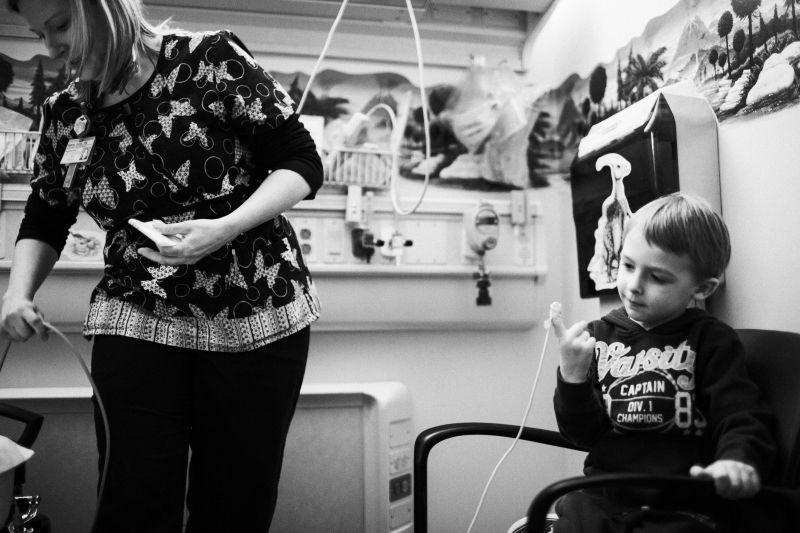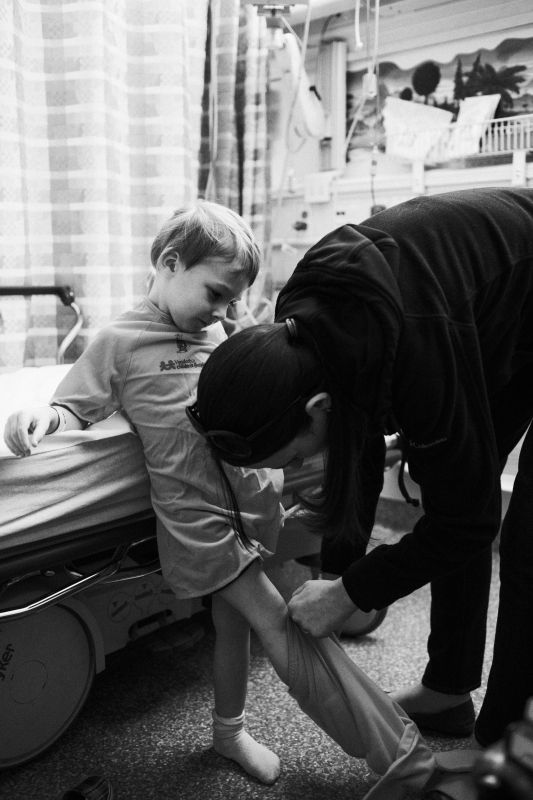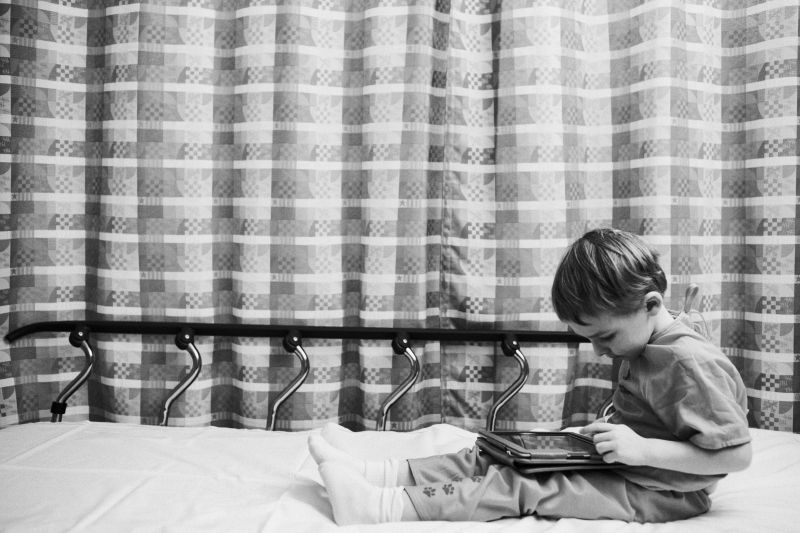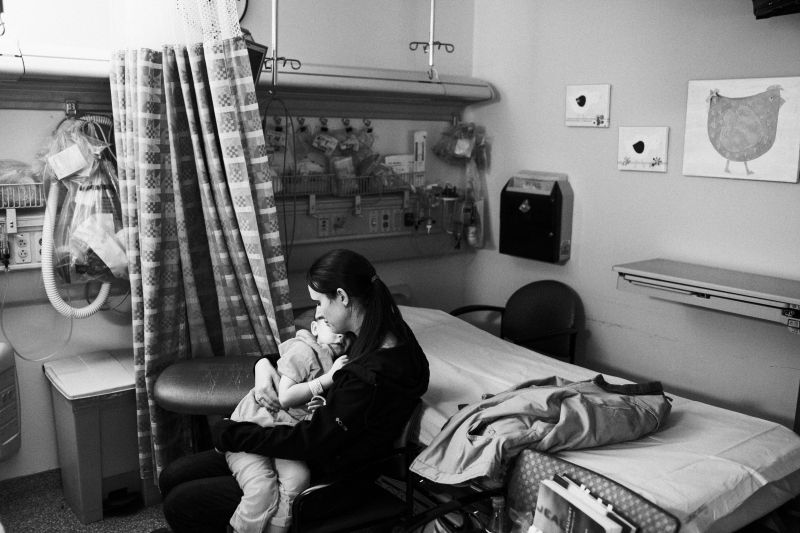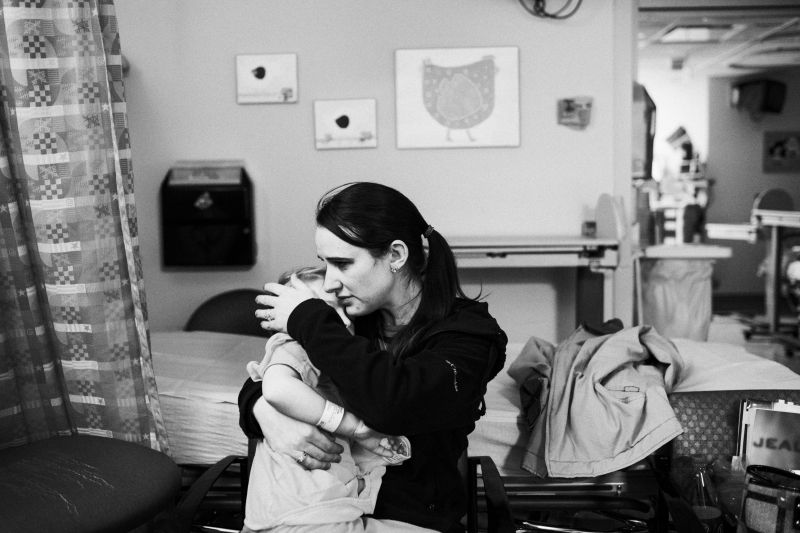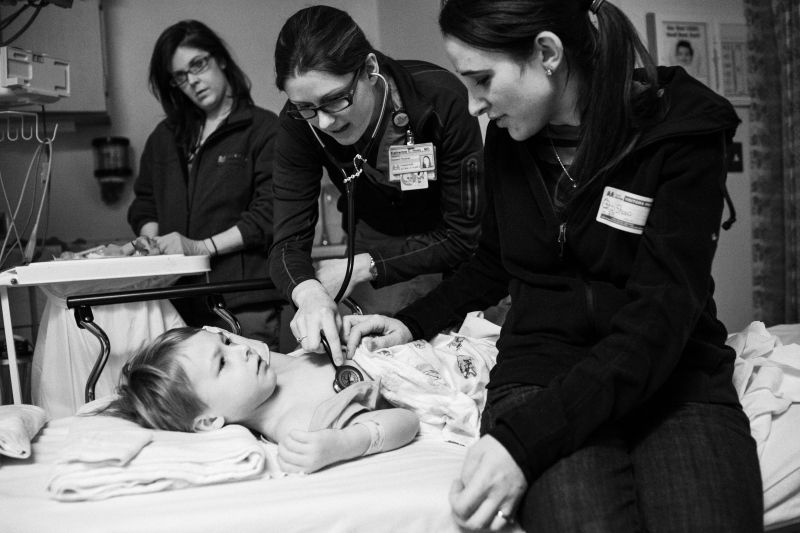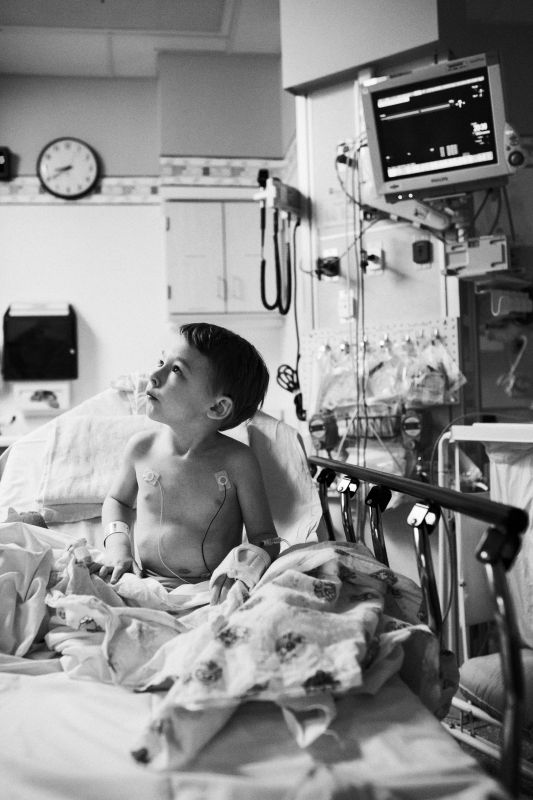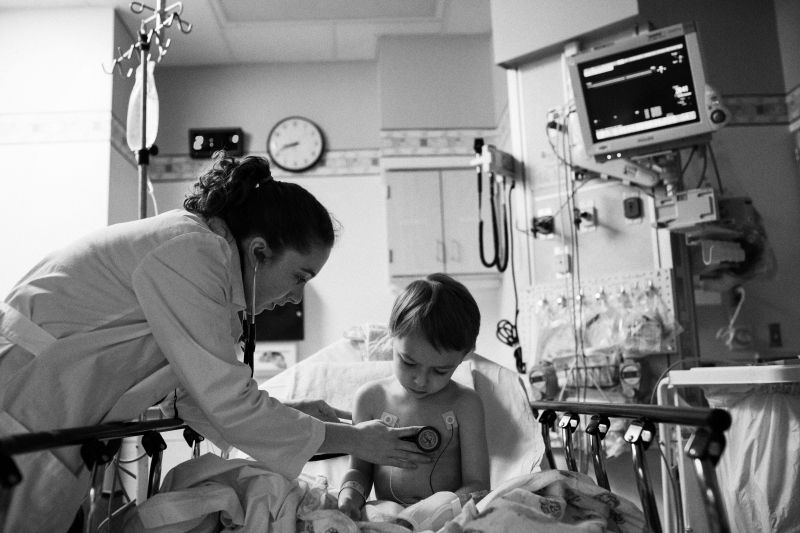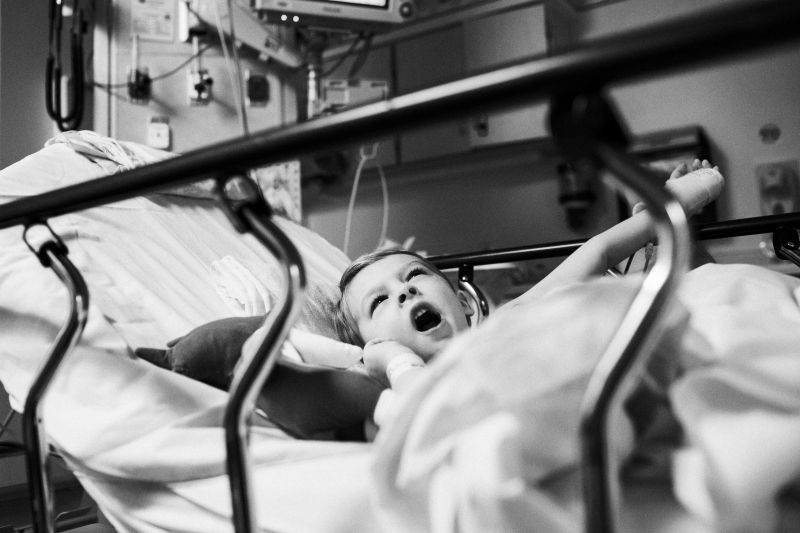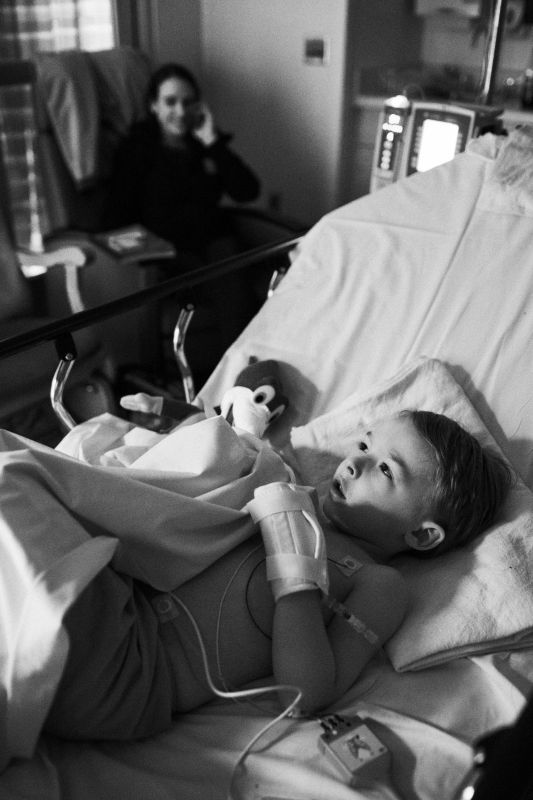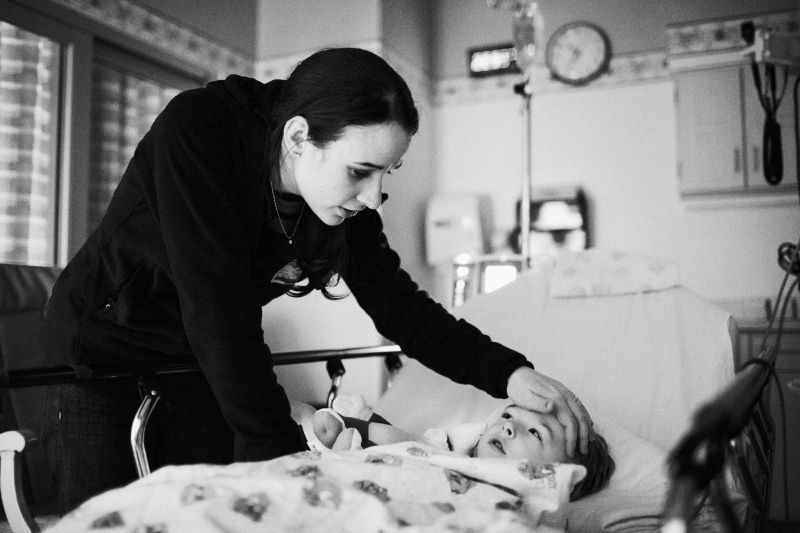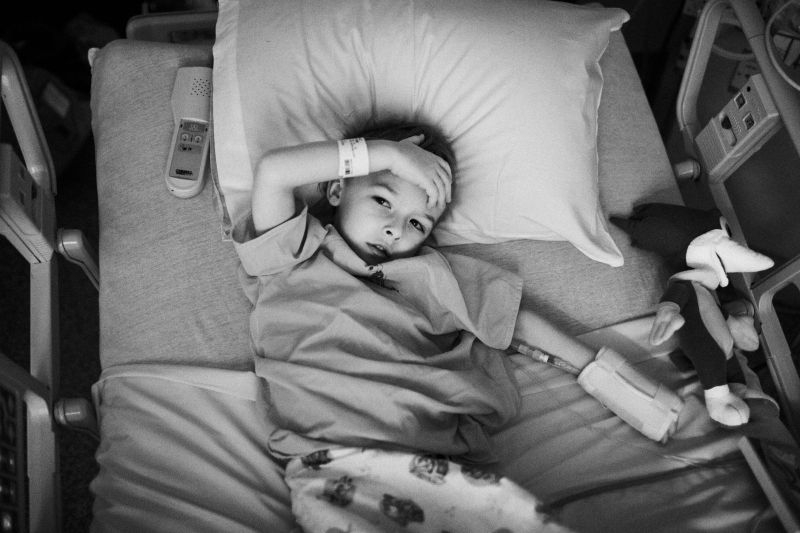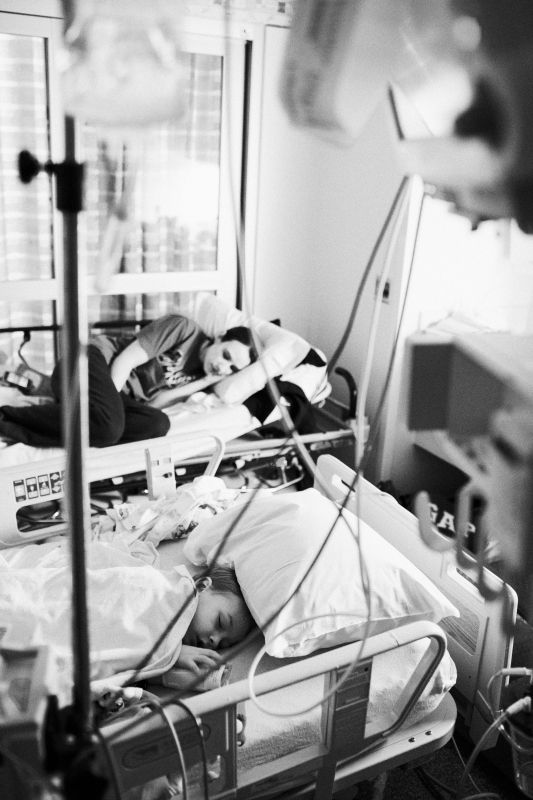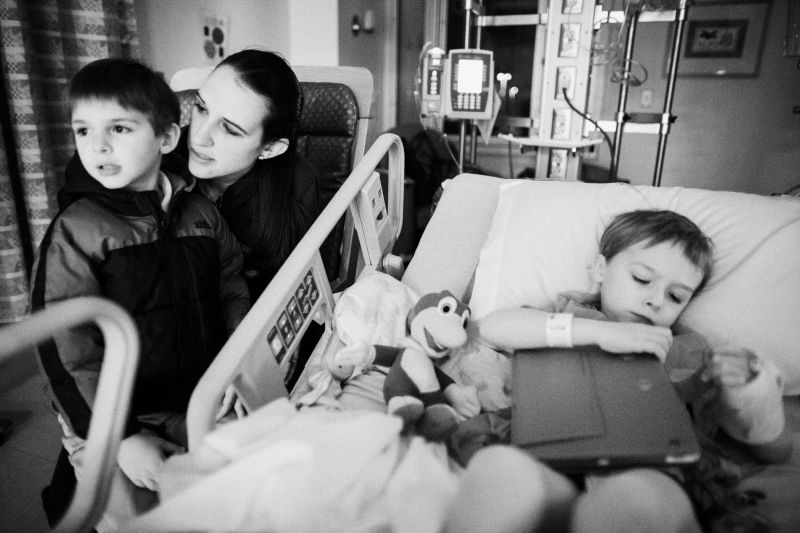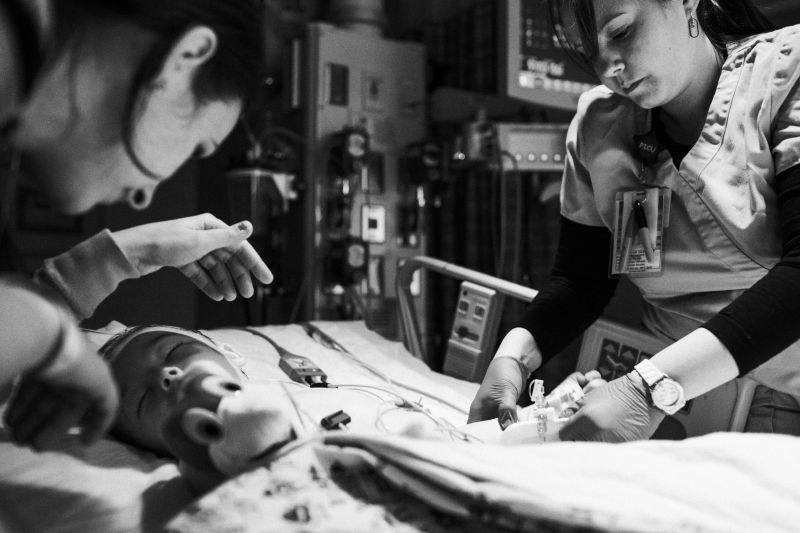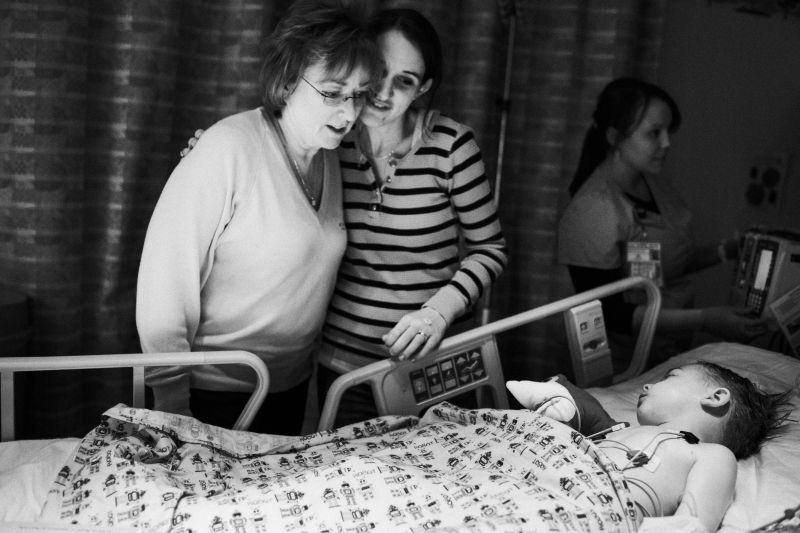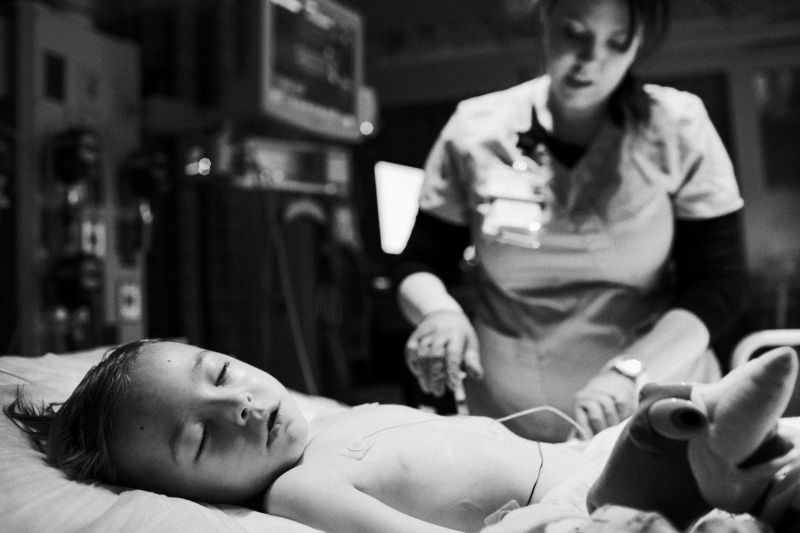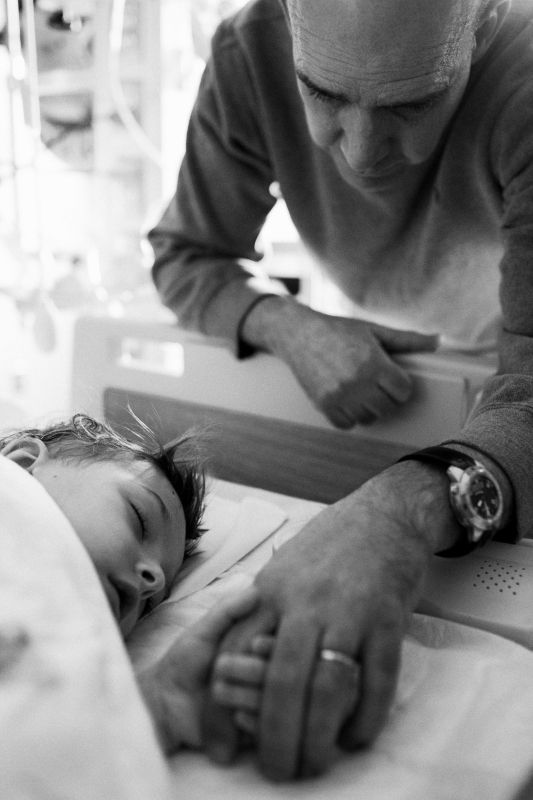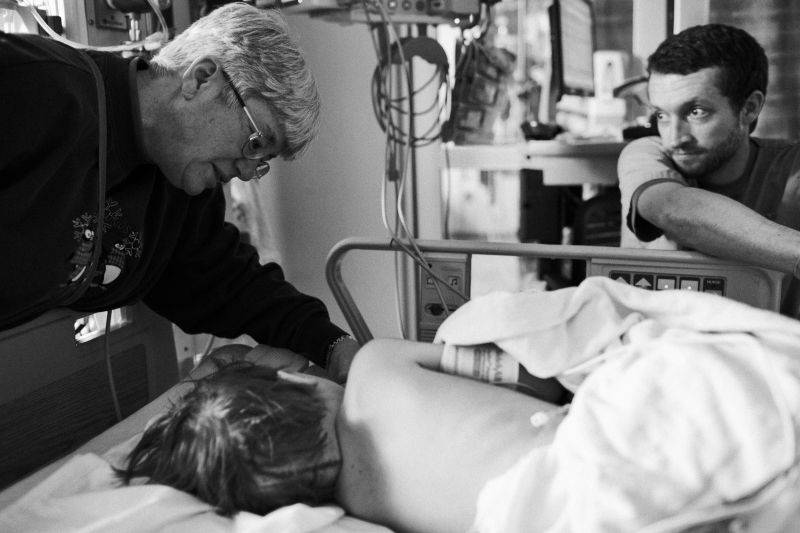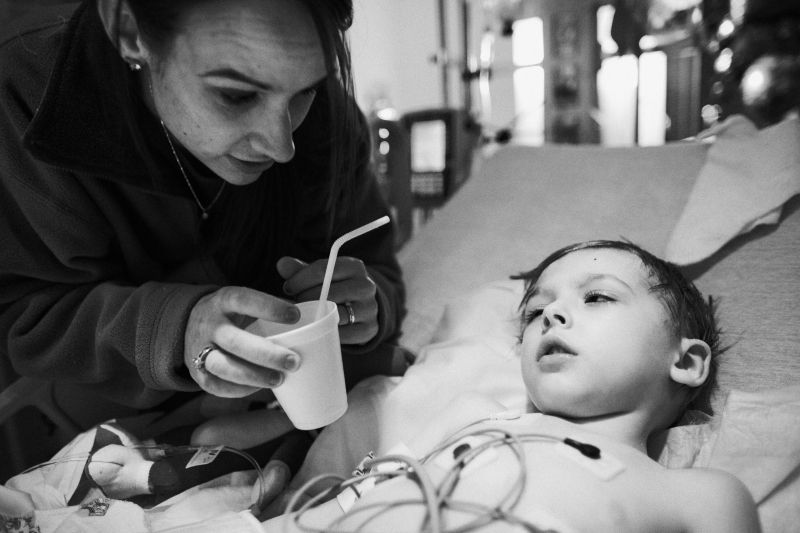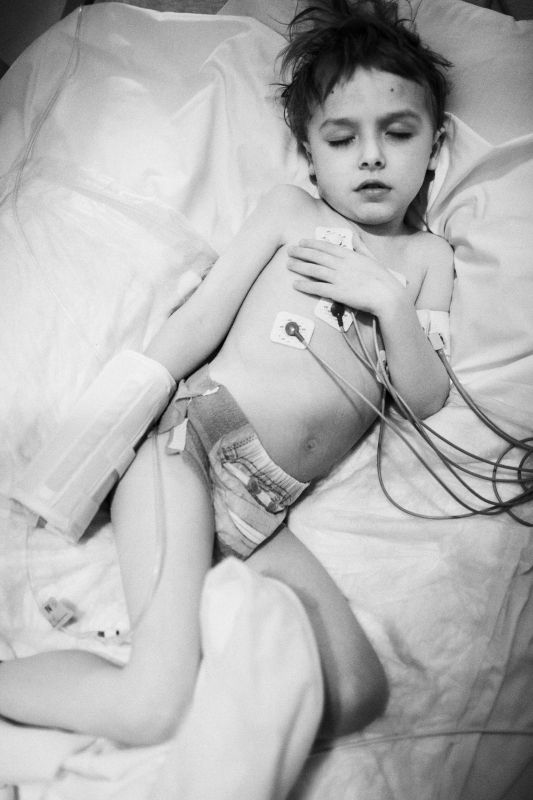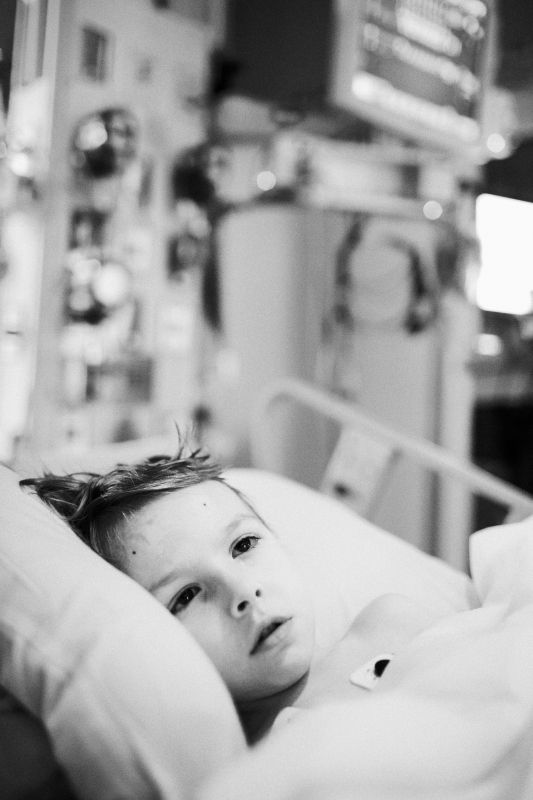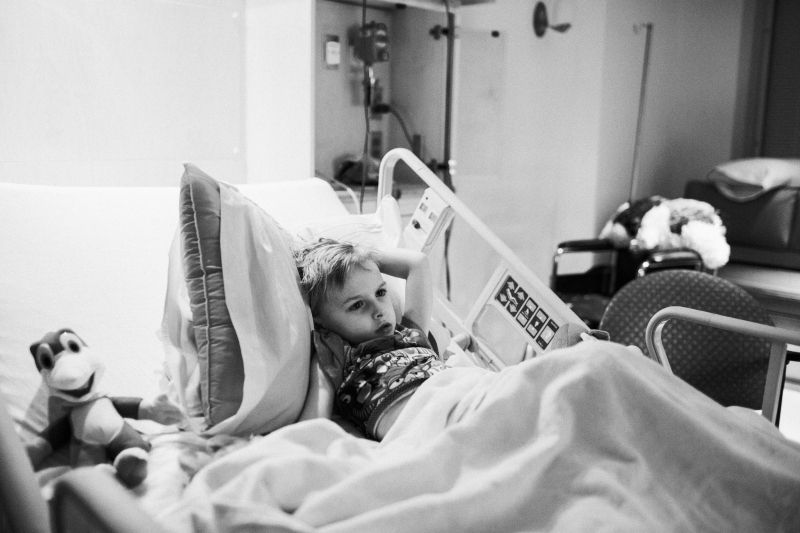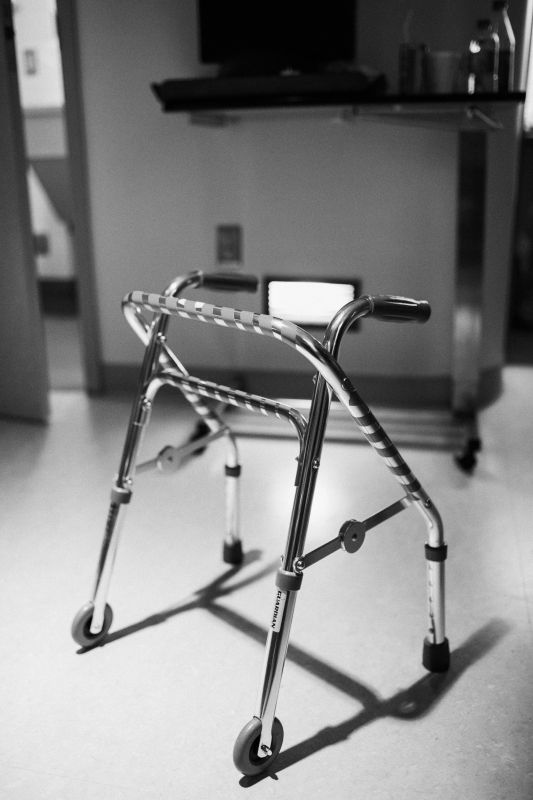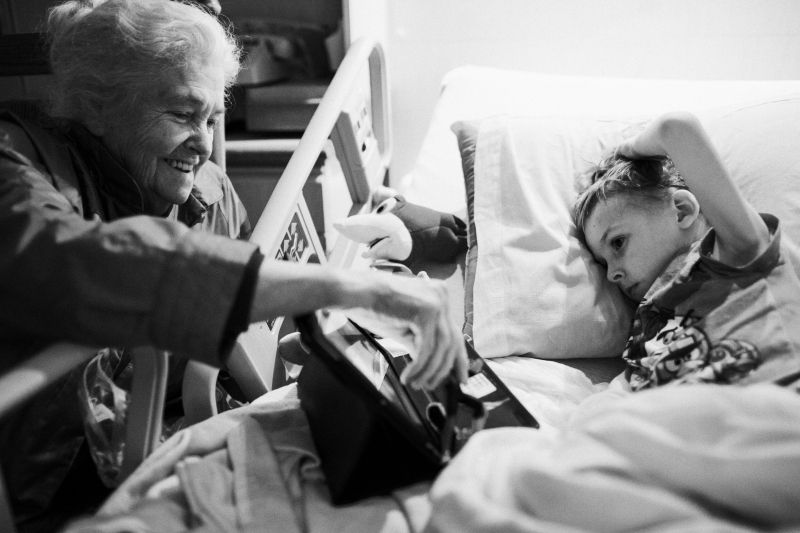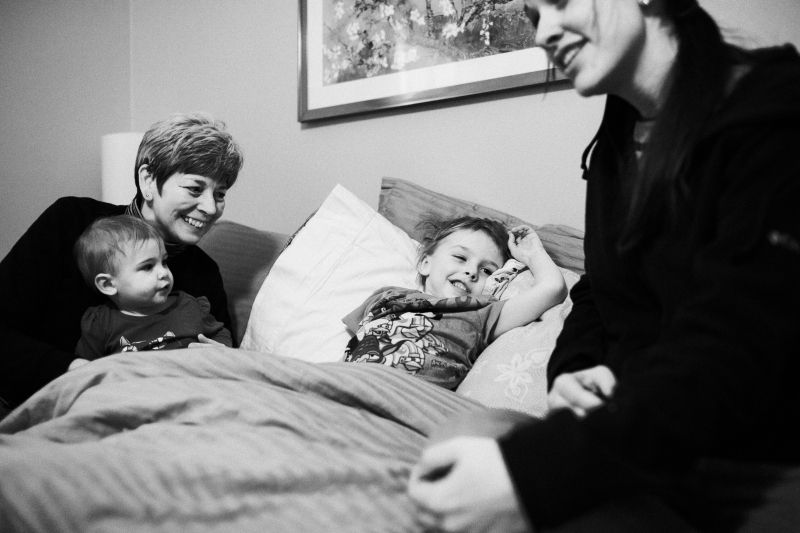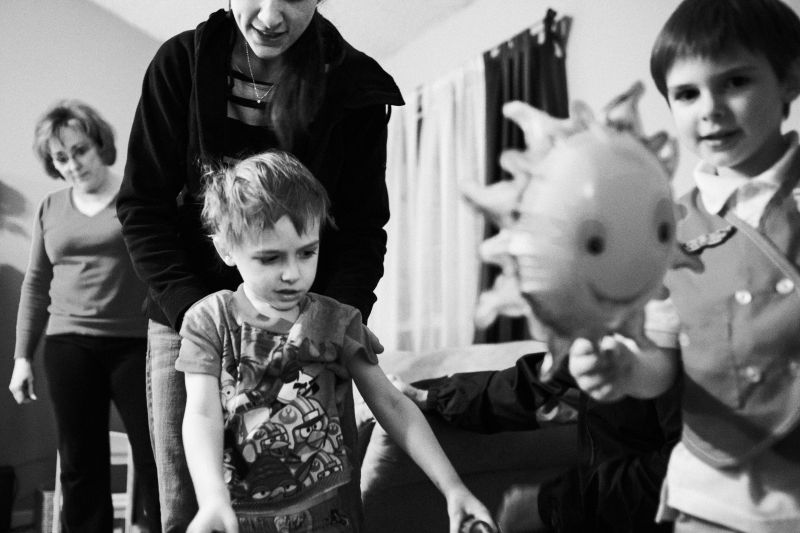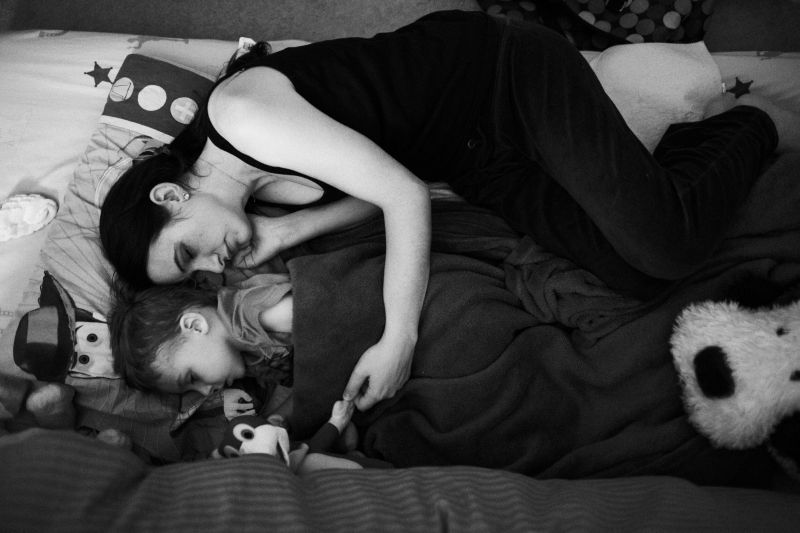One of the most difficult experiences of my life has been the recent surgery of my 4-year-old son Isaac. We took him in for a scheduled MRI and life quickly went from "What will we have for dinner after the MRI?" to "When is his surgery scheduled for?" They found a large tumor in his cerebellum and three days later, they removed it in the course of a 9-hour surgery. Some blood, many machines and wires, blood pressure cuffs, medications and myriad hospital staff became our reality. This monotony was often, and thankfully, disturbed by friends and family. All of these elements, those that brought pain and those which provided relief were equally a part of the story and deserved their portion in the documentary.
This set of images has some rather rapid transitions and a number of lulls. Both of these represent our experience. Much time spent waiting, sitting, watching cartoons, distracting, and consoling, while many and frequent changes found us at other times in very brief spans. In a moment, we shifted from innocence to knowledge, from a healthy son to one on the verge of catastrophe. And life began to be lived one moment after another. Life often presents rapid change, rapid transitions. As such, I intentionally avoided any attempts to smooth out this set, to fine tune it and hope that it speaks for itself outside of my background information.
Lastly, it has been my observation that emotions are often absent in photography, save the smiles and laughs, which, while valuable, belie an existence none of us can know exclusively. Sadness and pain are real. If we choose to omit those in our documentary, we do a disservice to our remembrance and create an artificial life, bereft of the things that made us value one another more deeply. I found no reason to leave my camera at home. This is our life, after all. For good or bad, I wanted to remember it. What follows are the moments from first entering the imaging area and donning the hospital pajamas to our eventual homecoming and the beginning of a new chapter of recovery. What follows is my view of those events.
Daniel
